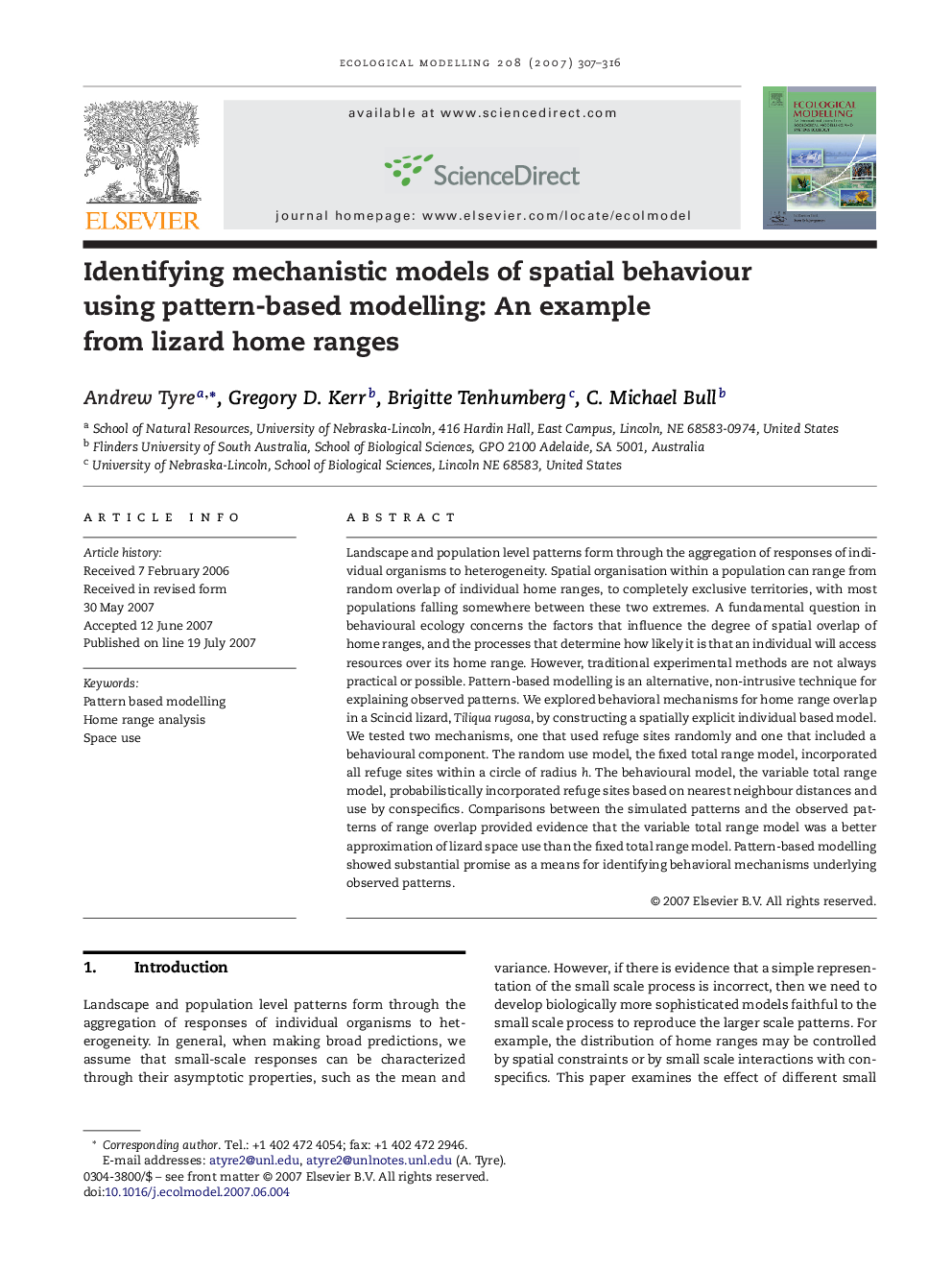| Article ID | Journal | Published Year | Pages | File Type |
|---|---|---|---|---|
| 4378417 | Ecological Modelling | 2007 | 10 Pages |
Abstract
Landscape and population level patterns form through the aggregation of responses of individual organisms to heterogeneity. Spatial organisation within a population can range from random overlap of individual home ranges, to completely exclusive territories, with most populations falling somewhere between these two extremes. A fundamental question in behavioural ecology concerns the factors that influence the degree of spatial overlap of home ranges, and the processes that determine how likely it is that an individual will access resources over its home range. However, traditional experimental methods are not always practical or possible. Pattern-based modelling is an alternative, non-intrusive technique for explaining observed patterns. We explored behavioral mechanisms for home range overlap in a Scincid lizard, Tiliqua rugosa, by constructing a spatially explicit individual based model. We tested two mechanisms, one that used refuge sites randomly and one that included a behavioural component. The random use model, the fixed total range model, incorporated all refuge sites within a circle of radius h. The behavioural model, the variable total range model, probabilistically incorporated refuge sites based on nearest neighbour distances and use by conspecifics. Comparisons between the simulated patterns and the observed patterns of range overlap provided evidence that the variable total range model was a better approximation of lizard space use than the fixed total range model. Pattern-based modelling showed substantial promise as a means for identifying behavioral mechanisms underlying observed patterns.
Keywords
Related Topics
Life Sciences
Agricultural and Biological Sciences
Ecology, Evolution, Behavior and Systematics
Authors
Andrew Tyre, Gregory D. Kerr, Brigitte Tenhumberg, C. Michael Bull,
